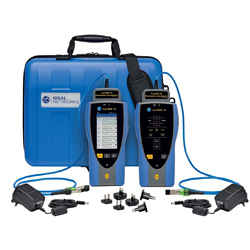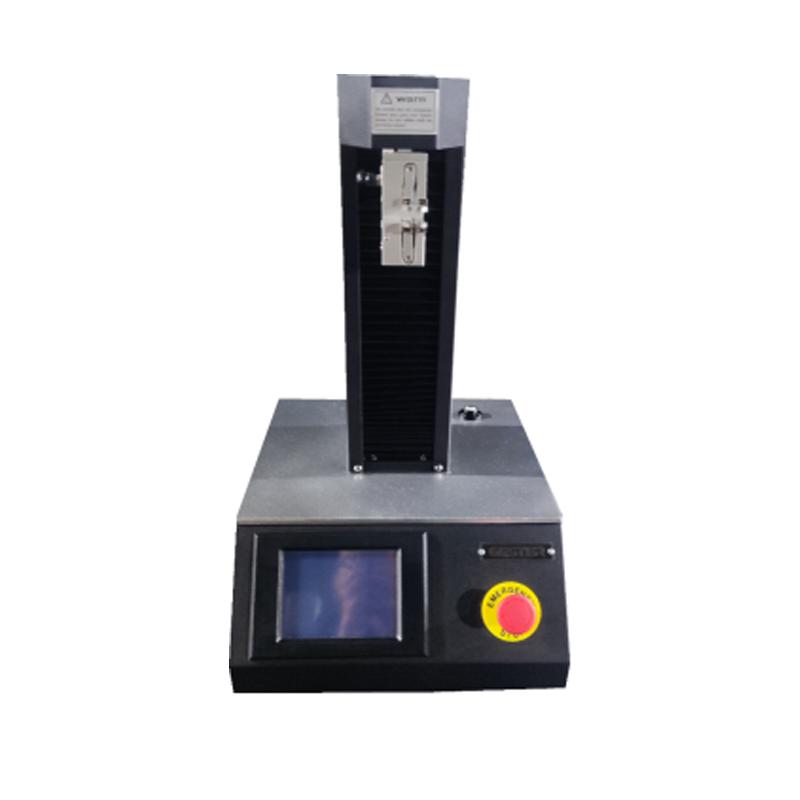Choosing the right optical fibre diameter analyzer for your industry needs
Wiki Article
Exploring Advanced Techniques in Fiber Measurement and Their Market Impact
In today's textile sector, precise fiber dimension is important for optimizing production processes and conference sustainability goals. With the increase of ingenious imaging and logical devices, you can gain much deeper understandings into fiber structure and composition. This change not just enhances performance yet additionally aligns with industry criteria. As these advanced strategies progress, you might question exactly how they can better transform making methods and influence the future of textiles.The Value of Accurate Fiber Measurement in Fabric Manufacturing

Innovative Imaging Technologies for Fiber Evaluation
When it concerns fiber analysis, innovative imaging modern technologies are game changers. High-resolution microscopy techniques and spectroscopic analysis approaches supply you with in-depth understandings into fiber structure and structure. These developments not just enhance accuracy but likewise improve your measurement processes.High-Resolution Microscopy Techniques
High-resolution microscopy methods have changed fiber evaluation, enabling scientists to imagine fibers at unprecedented levels of detail. With methods like scanning electron microscopy (SEM) and transmission electron microscopy (TEM), you can observe fiber morphology, surface area attributes, and cross-sections with remarkable quality. These methods enable you to distinguish between various fiber kinds and evaluate their architectural honesty. You'll locate that high-resolution imaging helps identify issues, inclusions, and various other critical qualities that can affect product efficiency. Improvements in digital imaging software application have actually enhanced image handling, making it easier to assess and translate data. By embracing these ingenious techniques, you can drive higher precision in fiber dimension and add to developments in various industries, from fabrics to compounds.Spectroscopic Evaluation Methods
Spectroscopic evaluation approaches have actually emerged as effective tools for fiber characterization, offering understandings that complement high-resolution microscopy. You can utilize methods like infrared (IR) spectroscopy, which assists determine the chemical composition of fibers by gauging molecular vibrations. Raman spectroscopy supplies one more layer of detail, permitting you to evaluate molecular frameworks via scattering of monochromatic light. These techniques not only enhance your understanding of fiber properties however also allow the detection of pollutants and structural variants. By incorporating spectroscopic strategies with traditional microscopy, you obtain a much more extensive sight of fibers' physical and chemical attributes, boosting your study precision. Inevitably, these developments can notably impact product selection and top quality control in different industries.Advanced Analytical Devices and Their Applications
As you check out the domain of fiber measurement, you'll find that innovative logical devices play an important role in enhancing precision and effectiveness. Strategies like high-performance fluid chromatography (HPLC) and gas chromatography (GC) allow you to examine fiber composition with remarkable accuracy. These devices enable you to recognize specific elements and contaminants, ensuring top quality control in your products.Additionally, making use of scanning electron microscopy (SEM) provides you an in-depth sight of fiber framework, assisting you comprehend just how various treatments influence efficiency. Modern software likewise enhances information evaluation, making it easier to interpret complex outcomes and team up across groups.
Influence of Fiber Measurement on Production Effectiveness
While accurate fiber measurement might feel like a little detail, it significantly affects production efficiency in the fabric sector. When you purchase accurate fiber measurement strategies, you can optimize basic material use and lessen waste. This leads to much better source allowance, enabling you to generate high-quality fabrics without excessive using resources.By understanding fiber characteristics, you can customize production procedures to specific materials, improving your operations and reducing downtime. Knowing the exact tensile strength of fibers allows you adjust equipment settings for maximum efficiency. This not just accelerates production yet additionally assures constant product quality.Moreover, exact fiber measurement helps you identify problems early in the assembly line, protecting against pricey reworks and hold-ups (fibre testing equipment). Generally, carrying out advanced fiber measurement techniques simplifies procedures, improves efficiency, and eventually boosts earnings. In today's affordable market, every detail counts, and exact fiber dimension is a game-changerSustainability Considerations in Fiber Evaluation Techniques
When you examine fiber, it's vital to consider lasting methods that can decrease ecological impact. Making use of eco-friendly dimension methods and reducing waste in your evaluations can substantially boost your total sustainability. Furthermore, integrating lifecycle analysis into your strategies can offer a more clear photo of your fiber's environmental impact.Eco-Friendly Measurement Techniques
Thinking about the expanding demand for sustainability in numerous sectors, taking on green measurement techniques for fiber assessment has actually ended up being essential. You can start by utilizing non-toxic solvents and eco-friendly products in your testing processes. These choices not just reduce environmental effect yet likewise improve safety for your group. Carrying out electronic dimension strategies can further decrease waste, as they usually need fewer physical examples and sources. In addition, leveraging ingenious technologies like near-infrared spectroscopy can produce exact results without unsafe chemicals. By choosing these greener techniques, you contribute to a much more lasting future while maintaining high requirements in fiber quality. Ultimately, integrating green practices right into your fiber assessment not only straightens with consumer values but additionally boosts your brand name's online reputation.Lowering Waste in Evaluation
To efficiently minimize waste in fiber assessment, you can implement approaches that improve your screening procedures and lessen resource consumption. Beginning by maximizing sample dimensions; utilizing smaller samples can yield precise results while saving materials. Next, purchase multifunctional equipment that enables numerous tests without requiring multiple devices, minimizing energy and resource usage. You should additionally take into consideration taking on electronic tools for information collection and evaluation, which can reduce down on paper waste and boost efficiency. Routinely educating your team on sustainable techniques ensures everyone's on board with waste reduction goals. Ultimately, working together with suppliers that prioritize sustainability can better boost your initiatives, allowing you to analyze fibers while preserving a commitment to ecological responsibility.Lifecycle Evaluation Integration
Incorporating lifecycle evaluation (LCA) into fiber analysis methods can considerably boost sustainability efforts. By analyzing the ecological impacts of fibers from manufacturing to disposal, you can recognize locations for enhancement. This method assists you understand resource consumption, energy usage, and waste generation throughout the fiber's life.When you incorporate LCA, you're not just gauging fiber qualities; you're likewise thinking about the eco-friendly footprint. This alternative view enables you to make educated decisions that focus on sustainability. You may choose fibers that require less sources or have a lower carbon influence. Inevitably, LCA equips you to enhance procedures, minimize waste, and promote eco-friendly choices in fiber production, straightening your techniques with worldwide sustainability objectives.
Industry Criteria and Regulations Shaping Fiber Measurement
As the demand for high-quality fiber items grows, understanding the industry standards and regulations that govern fiber measurement comes to be crucial. These guidelines assure uniformity, accuracy, and security in the dimension process, which inevitably impacts item high quality. Organizations like ASTM International and ISO stated criteria that makers need to comply with, covering numerous facets such as fiber identification, toughness screening, and moisture web content analysis.
Future Patterns in Fiber Measurement and Textile Production
Exactly how will improvements in technology improve fiber measurement and textile production? You'll see a change towards automation and real-time information evaluation, enhancing precision and effectiveness. Smart sensors will certainly monitor fiber homes continuously, enabling prompt adjustments in production. This implies you can anticipate greater quality textiles with less waste.Moreover, AI and artificial intelligence will predict patterns in consumer preferences, making it possible for suppliers to adjust promptly. fiber measurement. By integrating blockchain modern technology, you'll have far better traceability of products, guaranteeing sustainability and fiber measurement honest sourcing.Virtual reality and enhanced fact will certainly contribute too, using immersive training experiences for workers on fiber handling and manufacturing processes.As you accept these adjustments, the textile industry will certainly transform into a more responsive, sustainable, and innovative field, setting new requirements for top quality and performance. The future of fiber measurement and textile production is brilliant, and it's time to get on boardFrequently Asked Inquiries
What Are one of the most Typical Fiber Kind Measured in the Industry?
In the market, you'll frequently run into natural fibers like cotton and wool, as well as synthetic alternatives such as polyester and nylon. Each type has unique residential or commercial properties, influencing their dimension and application in various products.Just How Do Fiber Measurements Impact Consumer Item Top Quality?
Fiber dimensions straight affect customer product quality by ensuring consistency, resilience, and efficiency. When you comprehend these metrics, you can make enlightened selections, leading to improved contentment and much better total experiences with the products you utilize.What Training Is Needed for Fiber Measurement Technicians?
To end up being a fiber dimension professional, you'll need specialized training in textile science, dimension methods, and devices operation. Hands-on experience and certifications can improve your abilities, making you efficient in exact fiber evaluation and quality control.Exist Any Certifications for Fiber Measurement Professionals?
Yes, there are qualifications for fiber measurement specialists. You can go after choices like the Licensed Fiber Optics Technician (CFOT) or numerous industry-specific credentials that boost your proficiency and reputation in fiber measurement and screening.Just How Can Small Companies Execute Fiber Measurement Techniques Effectively?
You can implement fiber measurement methods properly by investing in cost effective tools, educating your team, and developing clear procedures. Collaborate with sector professionals and continuously improve your procedures to improve accuracy and performance over time.Report this wiki page